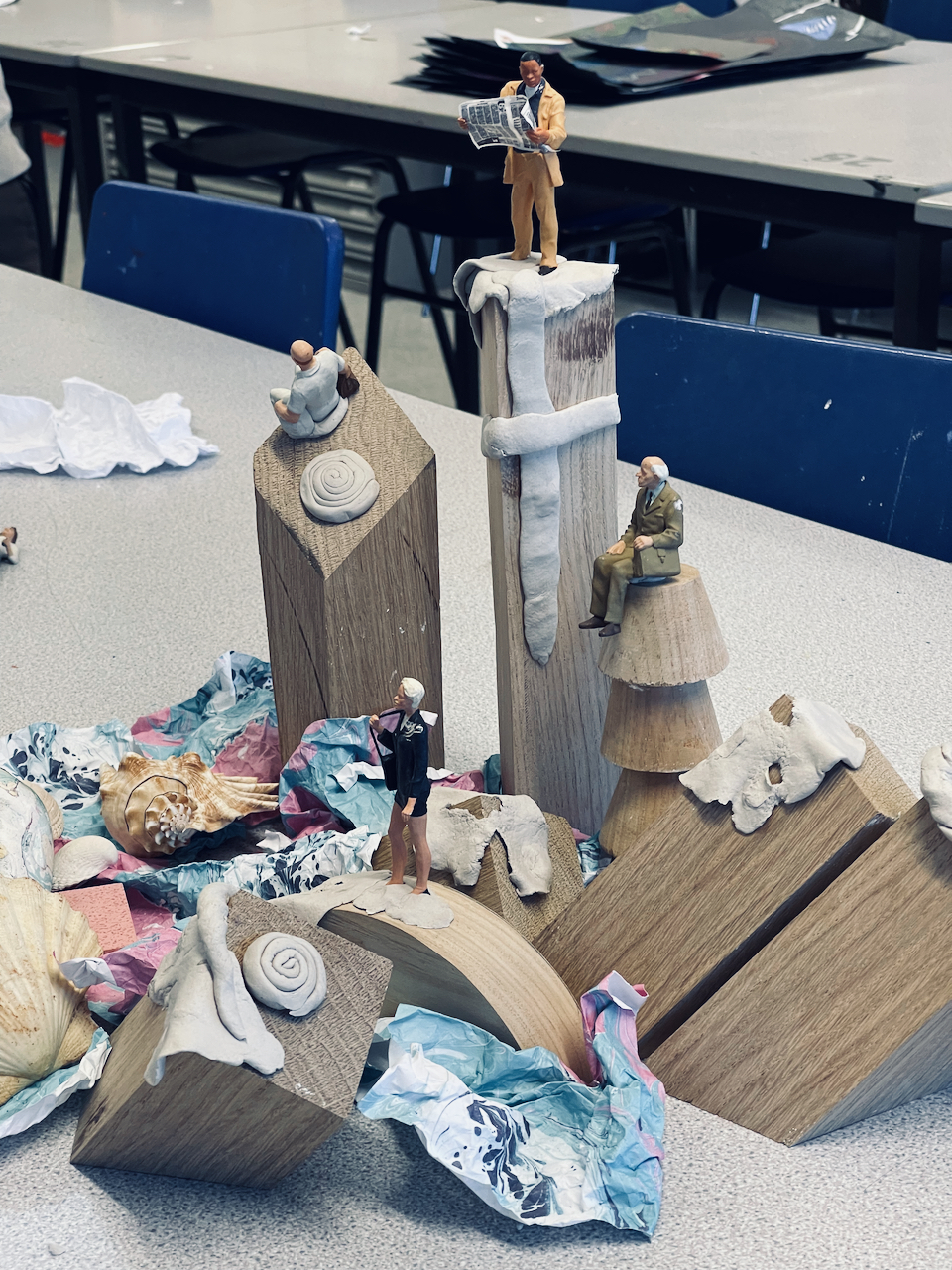NOBODY
LIVES BY
THE GRID_
A PUBLIC ART COMMISSION FOR OAKGROVE MILTON KEYNES
INTRODUCTION
This simple blog charts the process of the development of a public art project for Oakgrove, an area of Milton Keynes, by the artists Heather Peak and Ivan Morison.
This simple blog charts the process of the development of a public art project for Oakgrove, an area of Milton Keynes, by the artists Heather Peak and Ivan Morison.
The page begins with the very first thoughts about the commission and will continue through the development process charting conversations, activities, ideas and designs, fabrication, installation and early uses of the artwork.
The page is intended as a point of reference and recap for those involved in the process and others interested in it. Something like an occasional visual diary, blog and artists notebook.
Above images: medium format research images of Oakgrove and Milton Keynes by the artists
Above images: medium format research images of Oakgrove and Milton Keynes by the artists
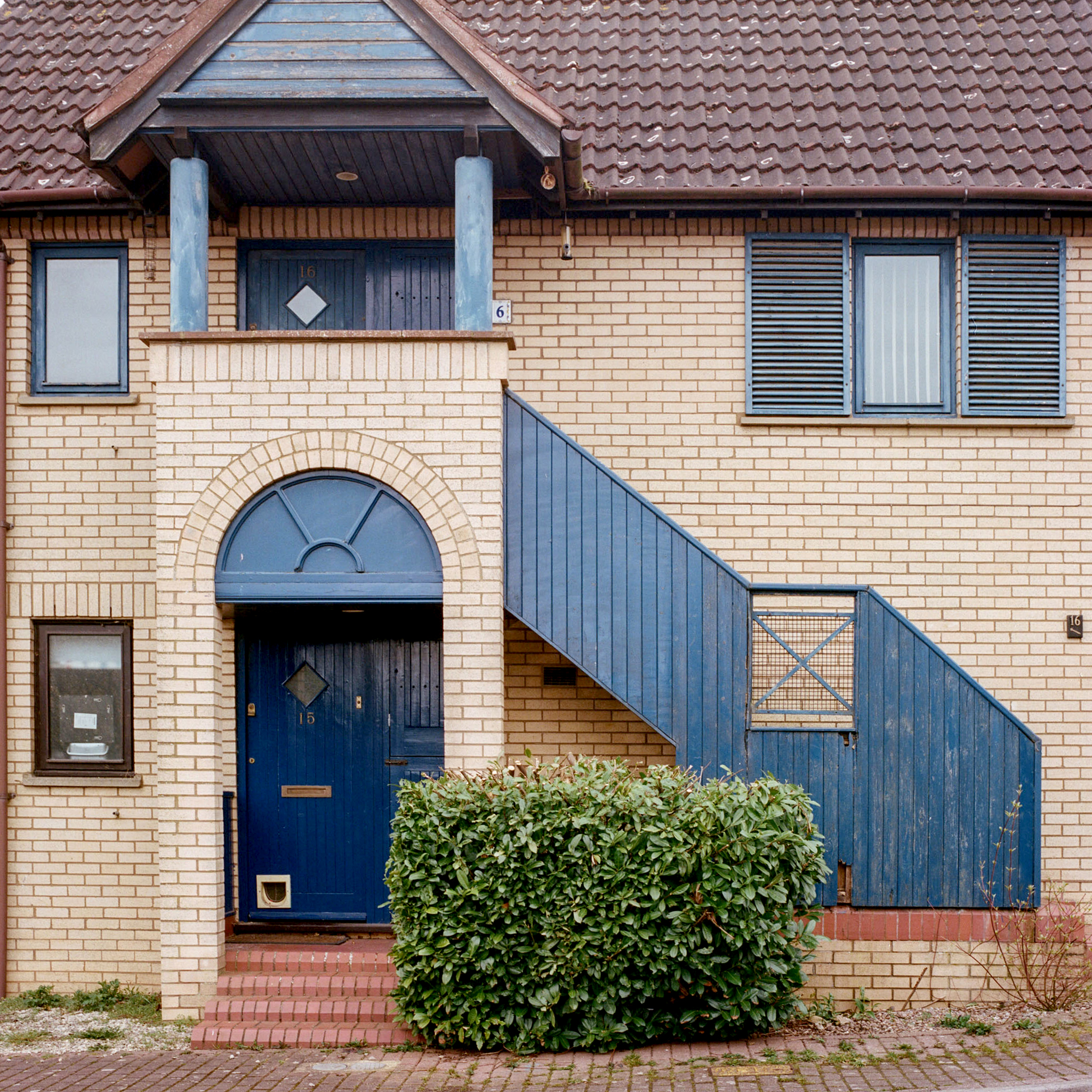


STARTING POINT
The commissioners aims and objectives of the project:
The commissioners aims and objectives of the project:
- To develop and deliver a permanent public art commission, which is inspired by and specific to Oakgrove as a place and as a community.
-
To work closely with commissioning partners and Oakgrove residents in the development of commission ideas
-
To explore the green landscape within and around Oakgrove and consider how best to make connections, encourage recreation, exercise and community well-being
-
To investigate the rich heritage of the local area and surrounding villages and consider how this might be reflected and celebrated within the final commission.
-
To engage the community in the process and ensure this inform the commission ideas
-
To work respectfully within the existing public realm, taking into consideration any existing constraints and sensitivities.
-
To work with the highest quality materials and fabrication processes, with a life span of 25+ years

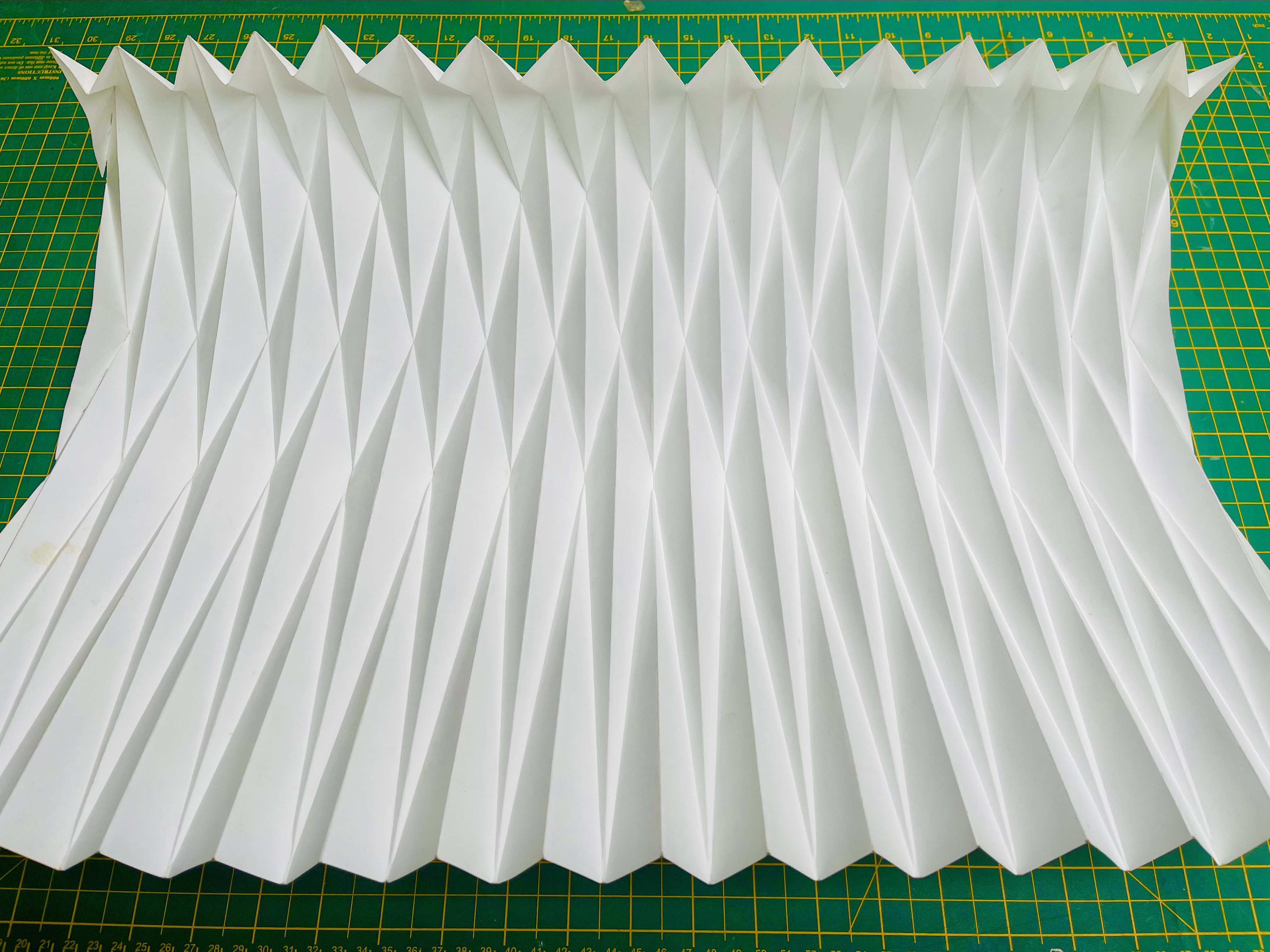


STEP 1
The artists were asked to spend time on site and then to present their thoughts and possible ways forward to the projects steering group. Here is a summary by the artists of what was shared.



WHAT WE SEE
The movement of people
The sense of belonging
The winding course of the rivers through the city
The stone of ancient churches and the thatch of cottages
The indent in the landscape of medieval fish ponds
The distorted city grid
The mesh of green walkways and cycle routes
The layering of history and place
The circle, slab, triangle and grid of the modernist project
The wonderfully varied range of inspirations of the city’s early planners – from weaver bird nests and shell formations to Bauhaus and communicating with aliens.
It has a long history
It is a place in the making


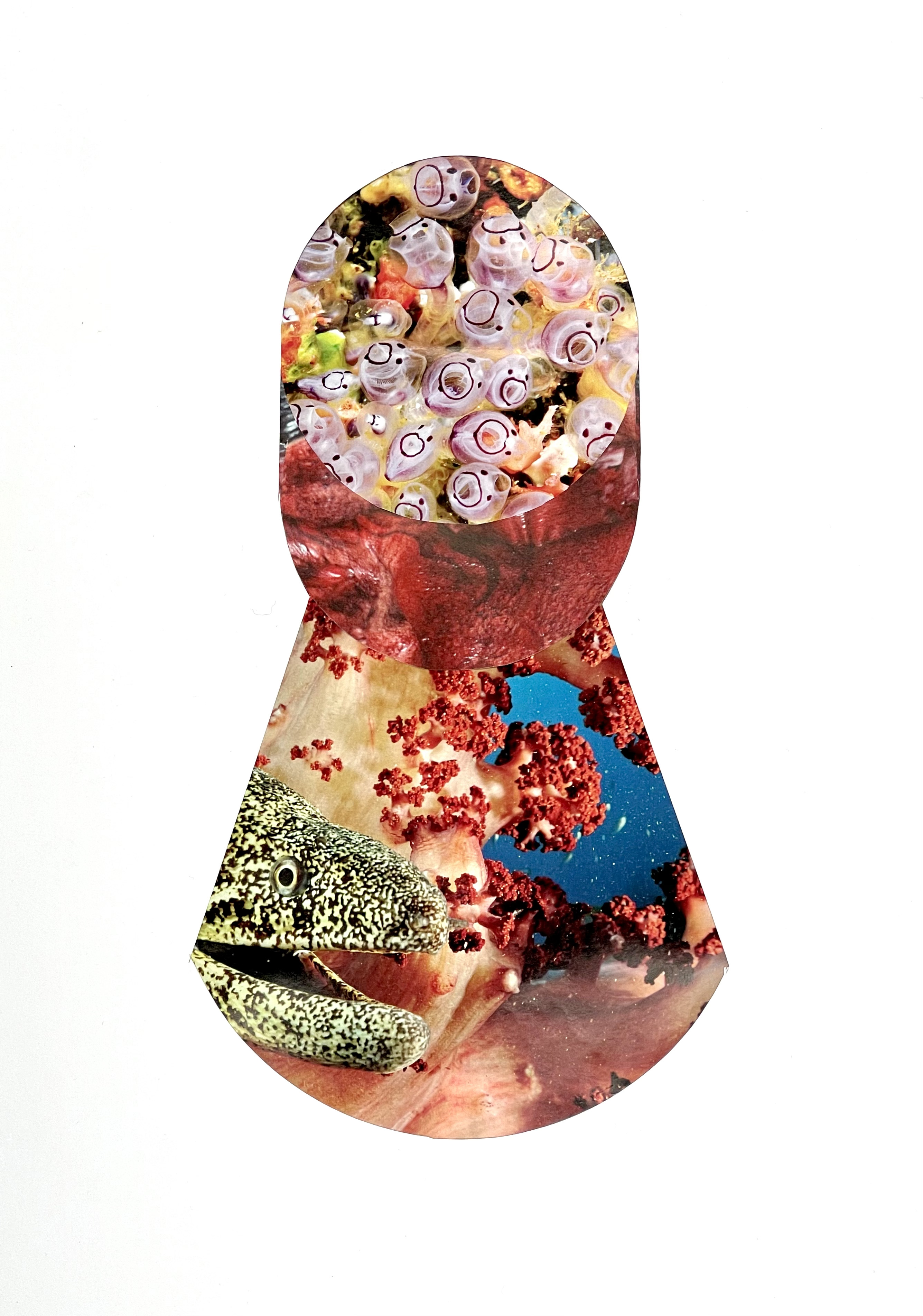
WHAT WE DO
Our focus in this project is to create new connections:
Between residents and residents
Between families, adults and kids
Across neighbourhoods
Between residents and nature
Between people and their built environment
Between audiences and the artworks



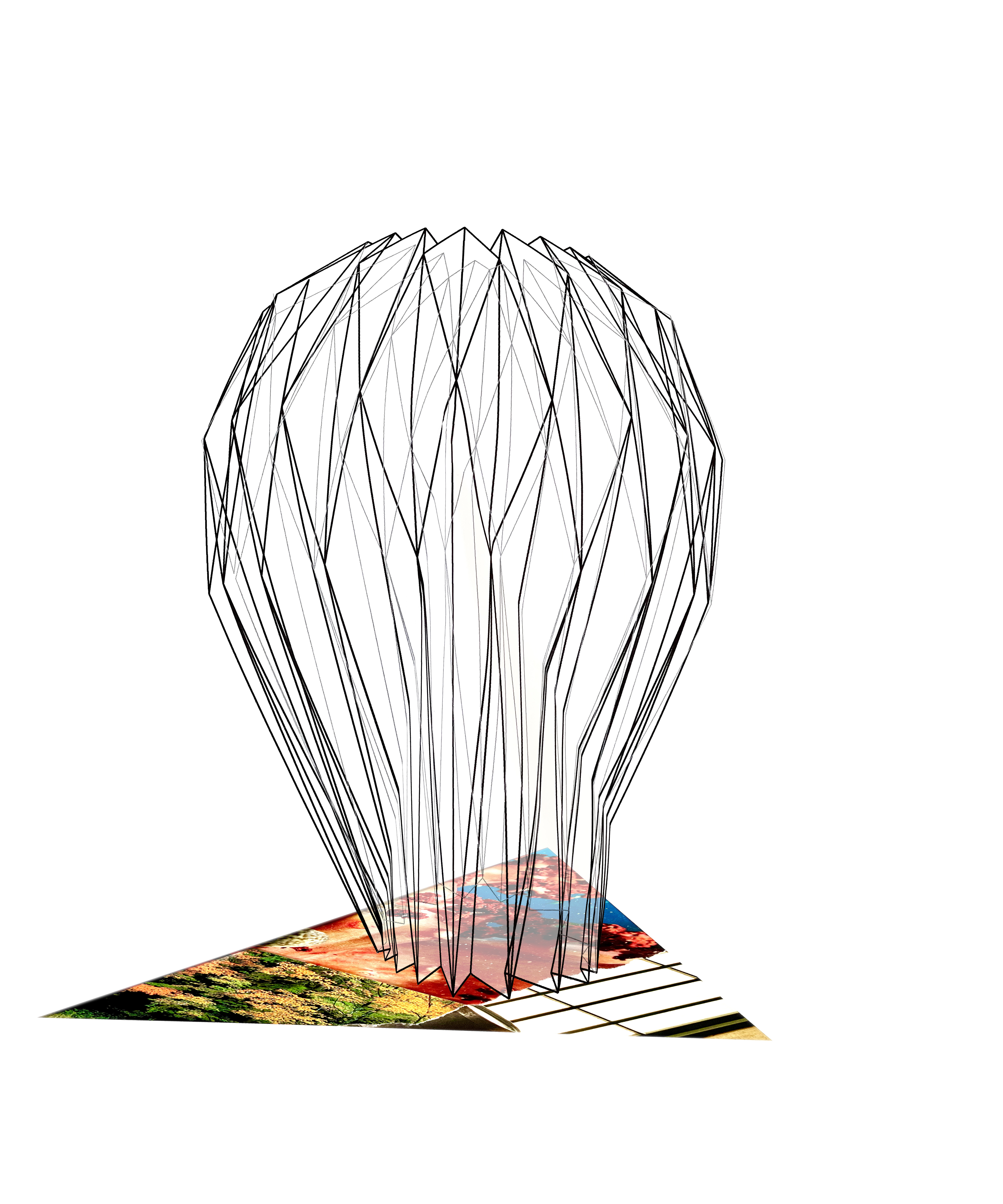

HOW WE DO IT
We approach the engagement with a focus on connecting people to people, people to ideas, ideas to place.
By creating a research group of interested people
By going on a creative journey through shared research and inspiration, off site visits to other art projects, creative conversations.
Collectively devise and deliver a series of wider creative community activities.
The final design of the work will come out of the learning gaimned from the engagement process.
We approach the engagement with a focus on connecting people to people, people to ideas, ideas to place.
By creating a research group of interested people
By going on a creative journey through shared research and inspiration, off site visits to other art projects, creative conversations.
Collectively devise and deliver a series of wider creative community activities.
The final design of the work will come out of the learning gaimned from the engagement process.
STEP 2
The artists introduced their past work and their ideas for a new work for Oakgrove to community members, gathering interested people to be a part of the creative journey.
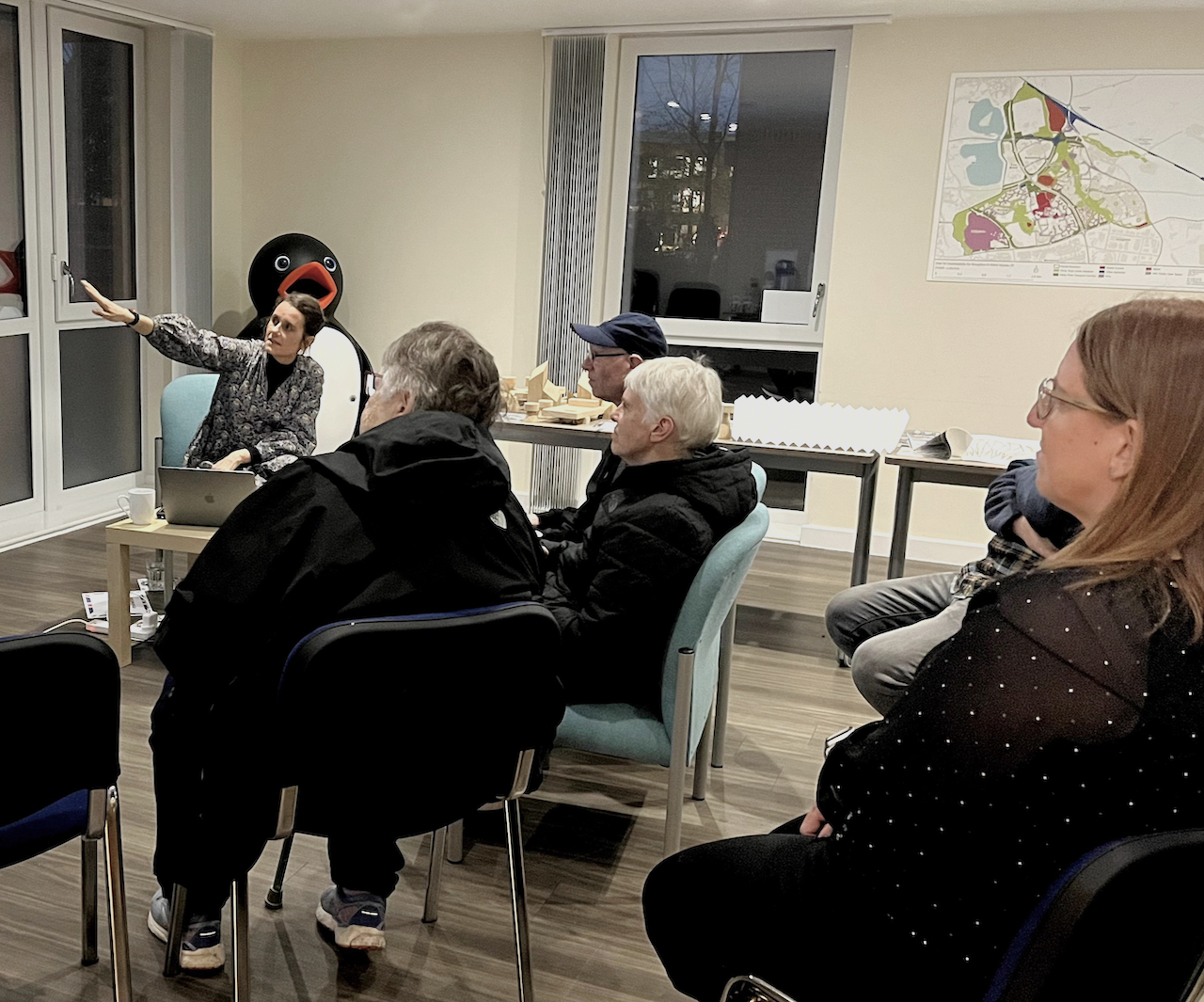
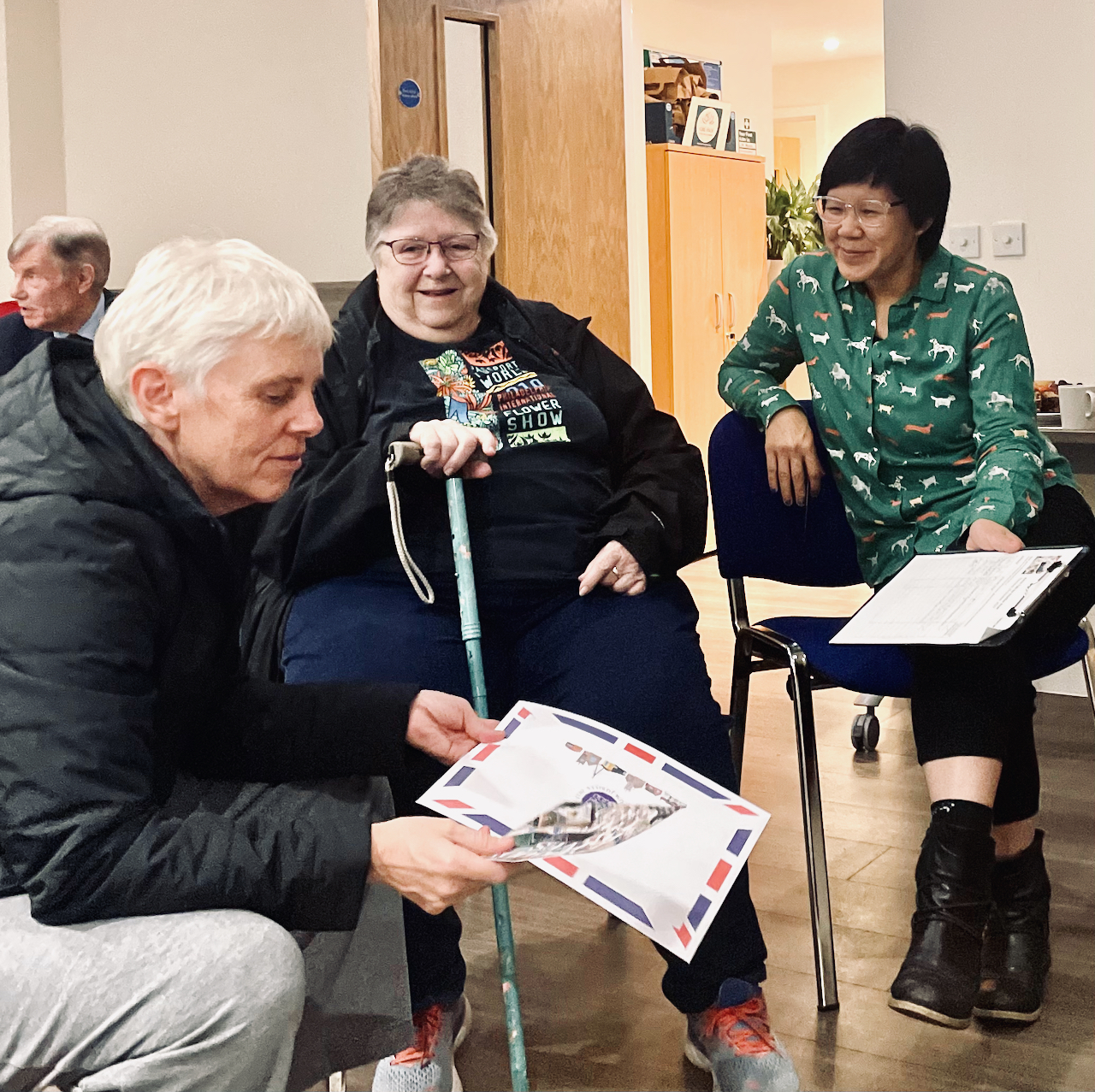
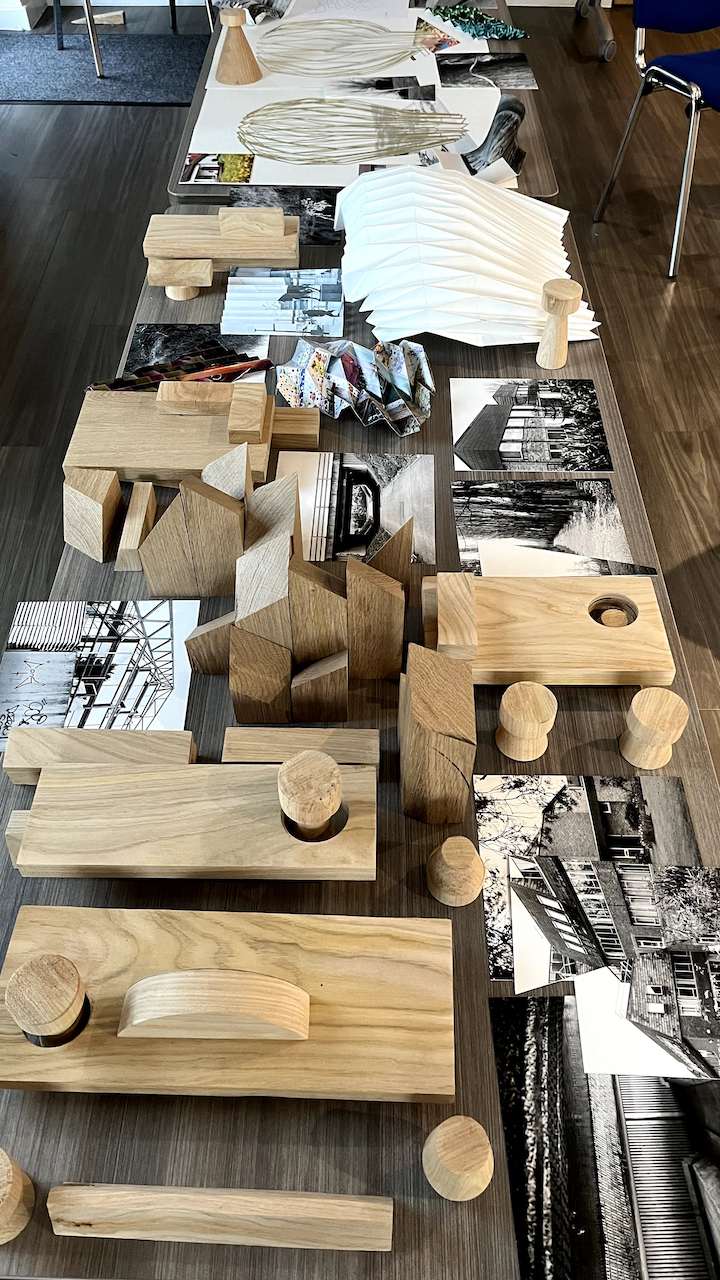
Next the artists held a day long workshop with sixth former art students at Oakgrove School.
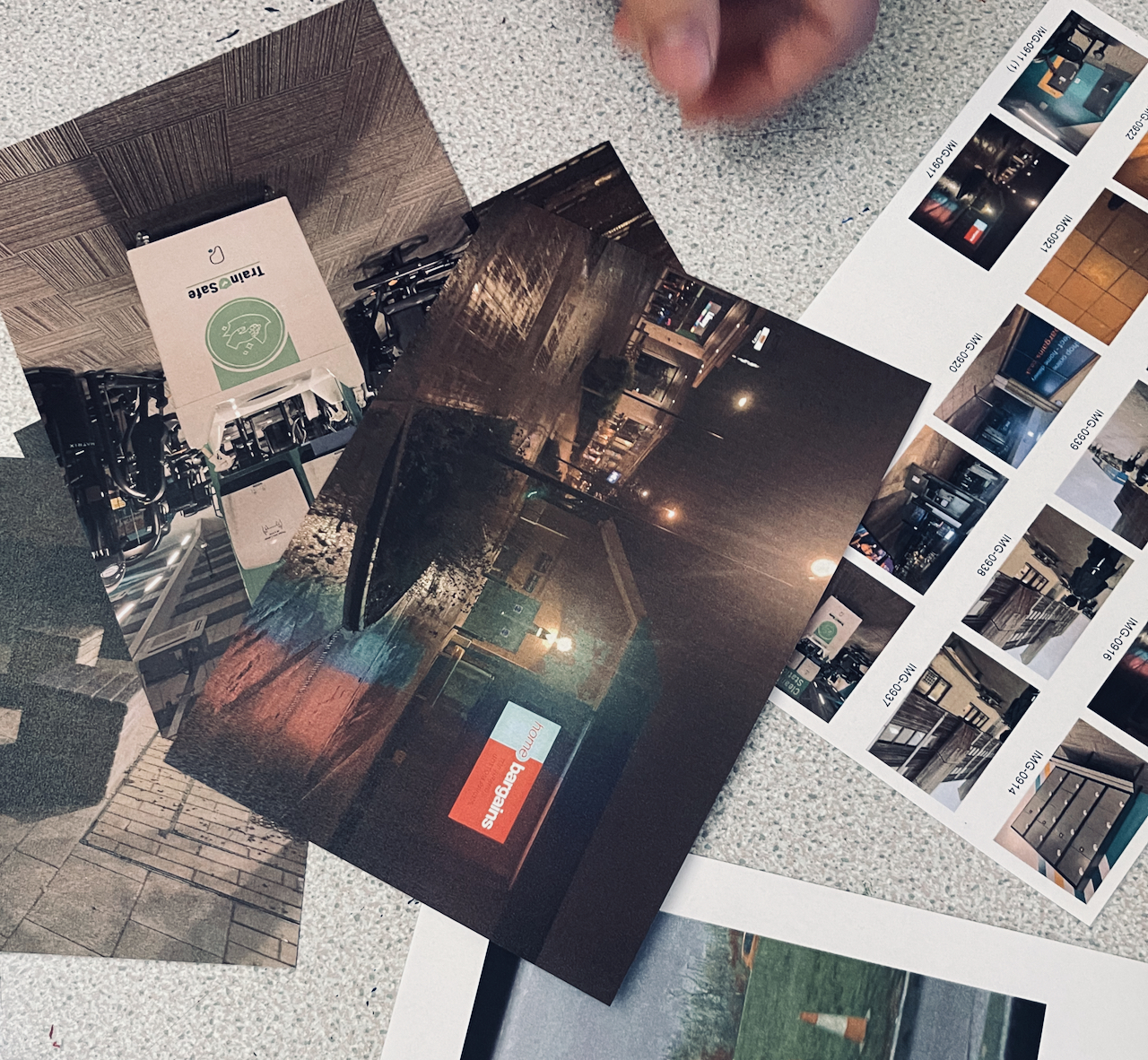
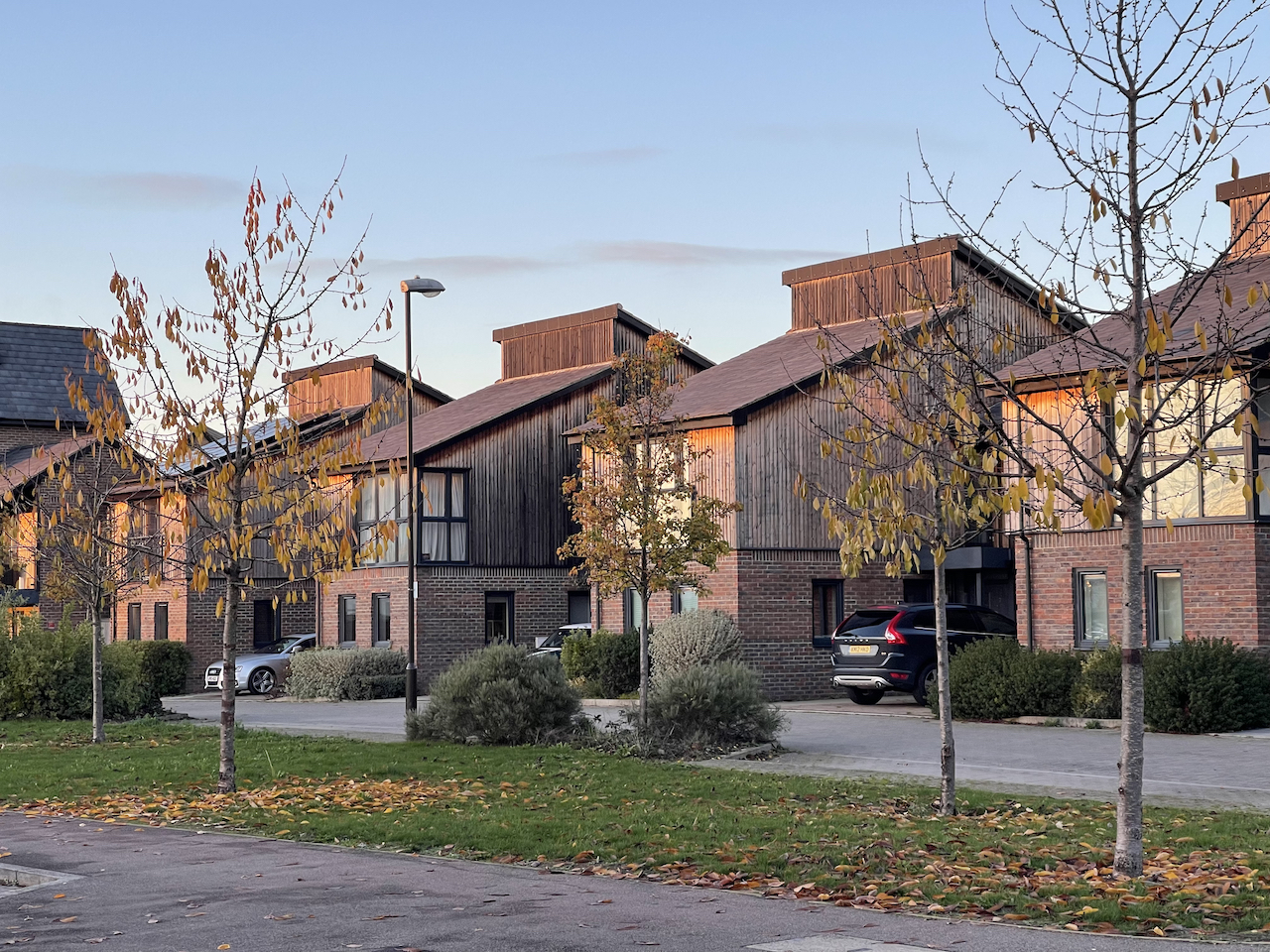
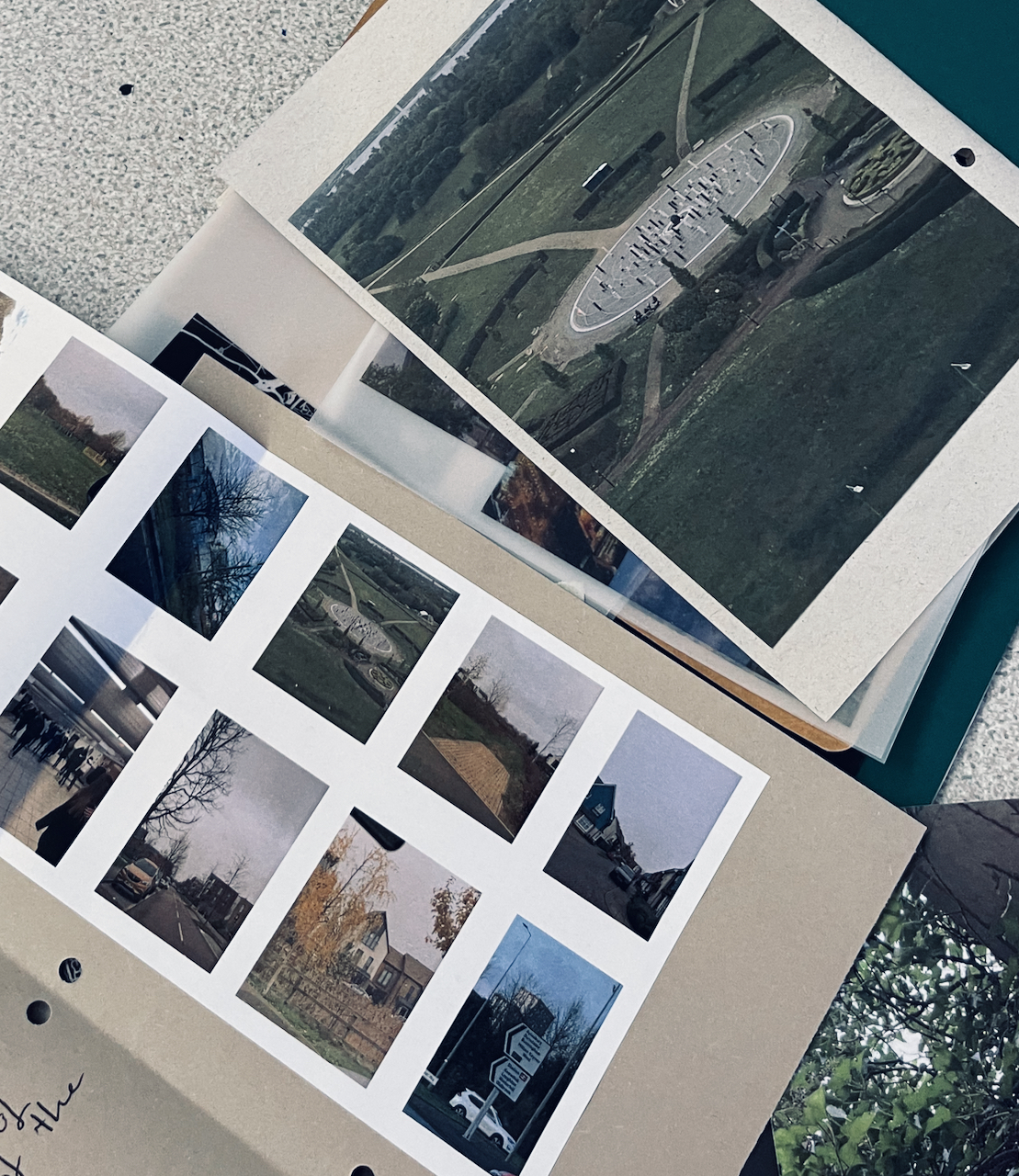
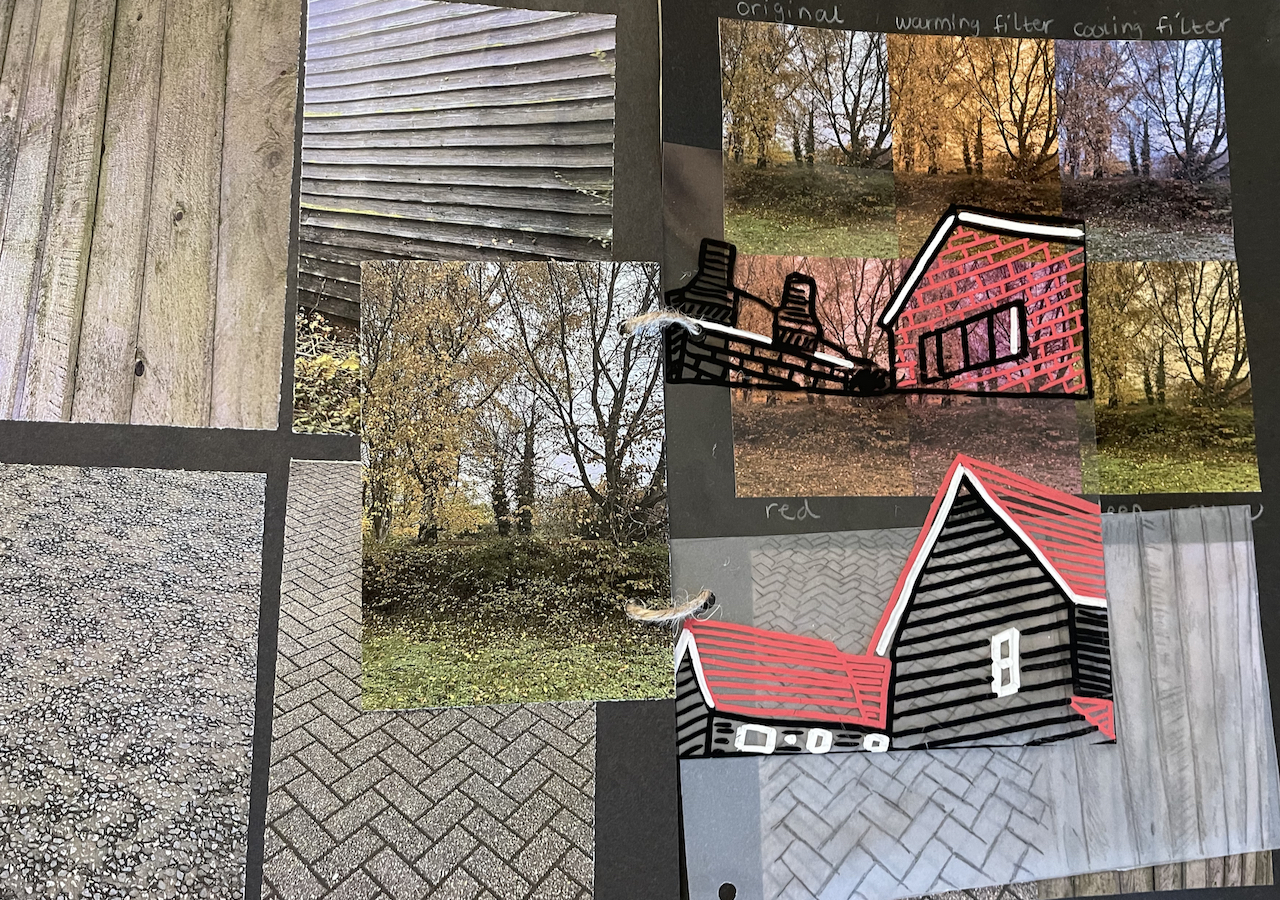
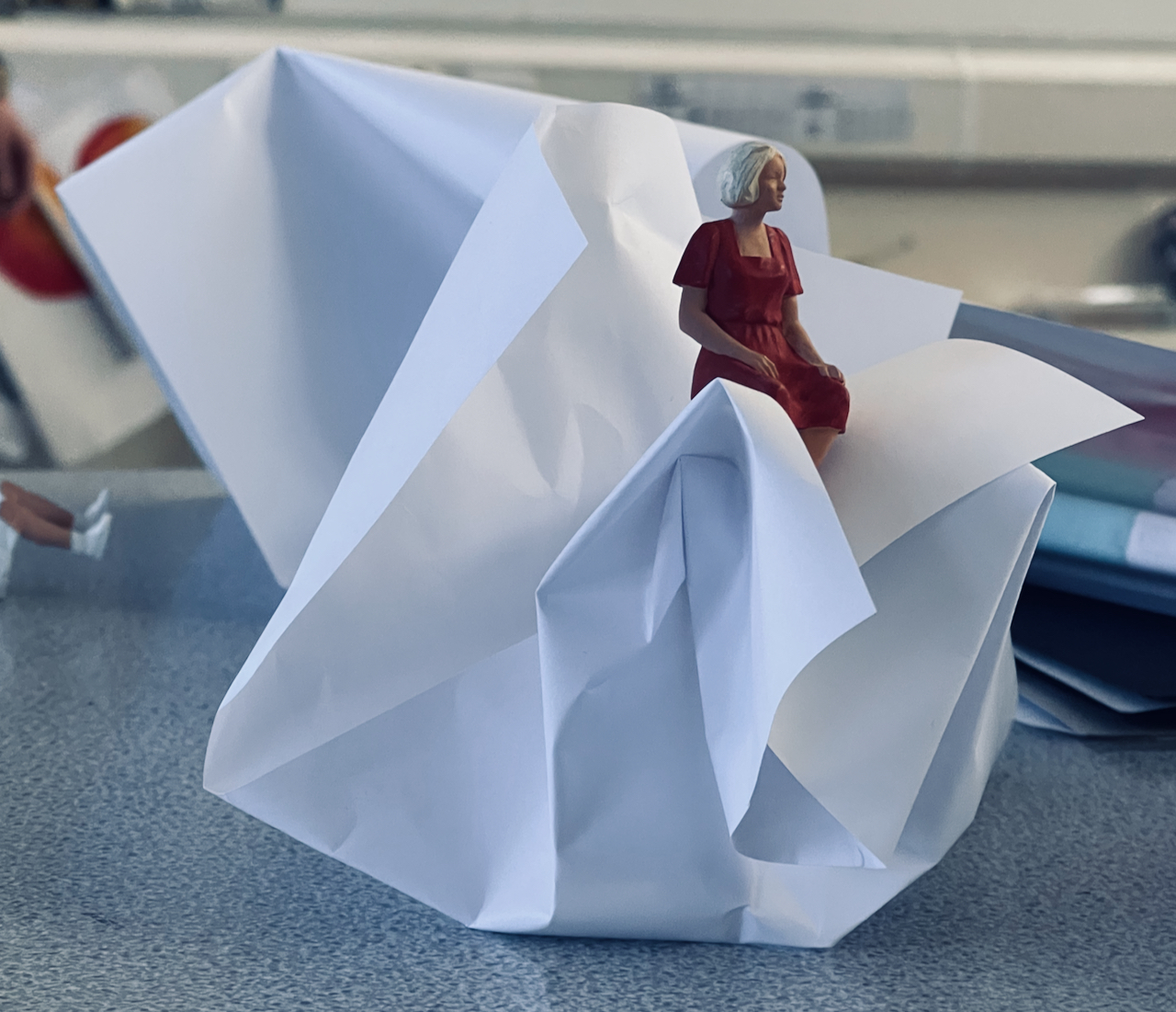
OBJECTIVES
The objectives for the day were:
To explore the Oakgrove area to identify possible places for the future artworks
To understand why we might want to put a sculpture in the public realm
To find forms and materials that are present within the local built environment
To explore simple manipulation of materials and sculptural form finding
To think of forms and materials that are not in the local built environment, but are opposite, or complimentary or unexpected or welcomed
To find ideas and thoughts that are present within the local community
To think of ideas and thoughts that are not in the local community, but are opposite, or complimentary or unexpected or welcomed
To explore what a social sculpture is, what social networks are present within this community, and how we might use this art commission to sculpt them
To search for the blind spot within the community, the hidden truth
PREPARATION
In preparation for the workshop the students were given these instructions:
Look through the books that have been sent to the school in advance of the workshop
Using your phones take pictures around Milton Keynes of one type of shape you see recurring in architecture, in street scenes, indoors or in nature. Organise your photos into a short selection (three to five images) to show during the workshop.
Using your phones take pictures around Milton Keynes of colours, patterns and/or materials that particularly stand out to you in the architecture, in street scenes, inside homes or buildings, in peoples clothing or in nature. Organise them into a short selection (three to five images) to show during the workshop.
Look around Oakgrove and take a single picture of where you think the addition of a new artwork would be good. Think about if it would make a good place to gather, if there is space for it to be seen - it may enliven a boring spot or offer a place to rest on a busy corner etc
Actively listen to what people around you are talking about, try to understand the mood, look for what isn’t there
Find / choose something you can fit in your hand and bring it with you. Nice if it incorporates any of the characteristics you have noticed in the things you have done above.
In preparation for the workshop the students were given these instructions:
Look through the books that have been sent to the school in advance of the workshop
Using your phones take pictures around Milton Keynes of one type of shape you see recurring in architecture, in street scenes, indoors or in nature. Organise your photos into a short selection (three to five images) to show during the workshop.
Using your phones take pictures around Milton Keynes of colours, patterns and/or materials that particularly stand out to you in the architecture, in street scenes, inside homes or buildings, in peoples clothing or in nature. Organise them into a short selection (three to five images) to show during the workshop.
Look around Oakgrove and take a single picture of where you think the addition of a new artwork would be good. Think about if it would make a good place to gather, if there is space for it to be seen - it may enliven a boring spot or offer a place to rest on a busy corner etc
Actively listen to what people around you are talking about, try to understand the mood, look for what isn’t there
Find / choose something you can fit in your hand and bring it with you. Nice if it incorporates any of the characteristics you have noticed in the things you have done above.

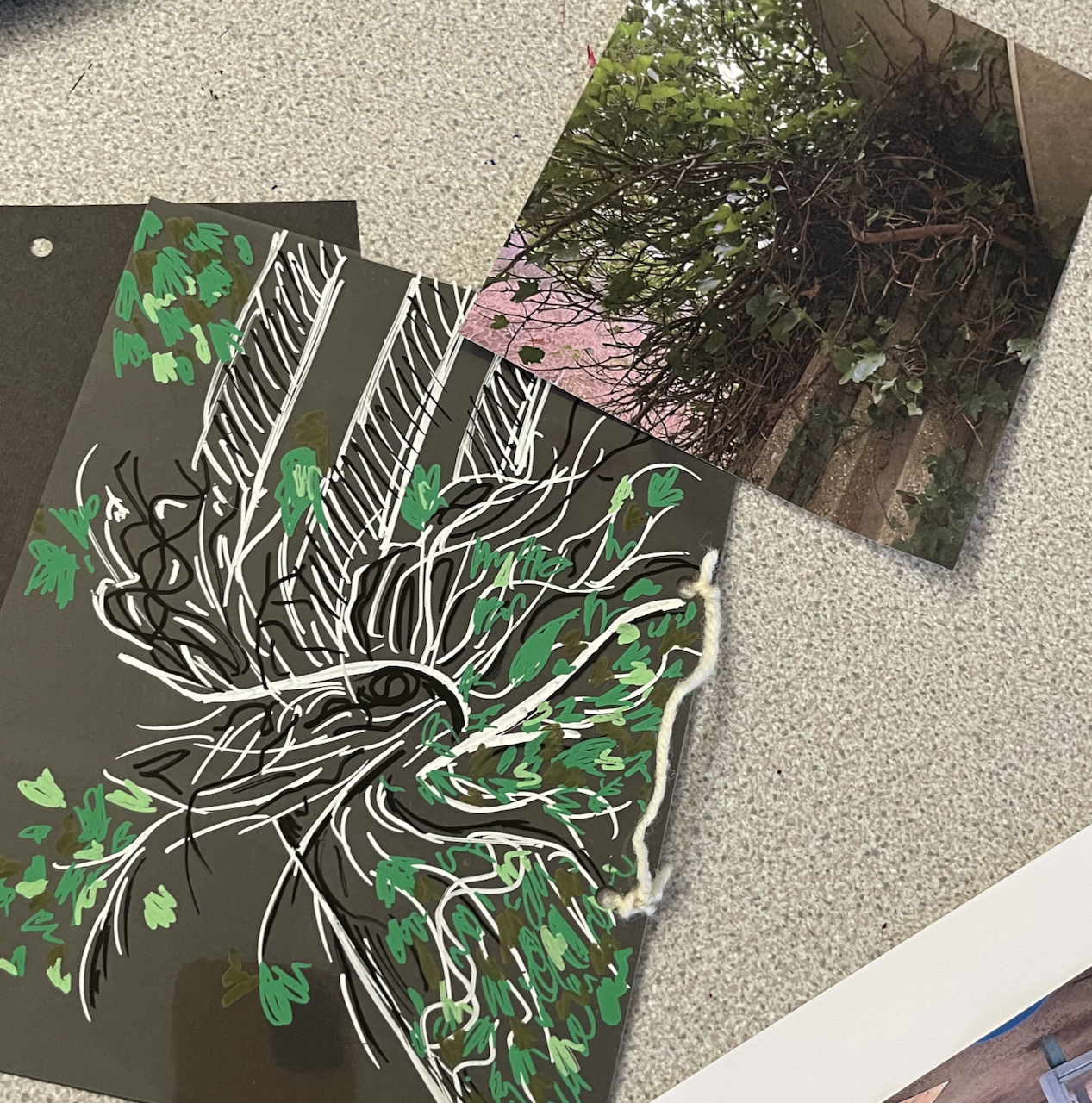

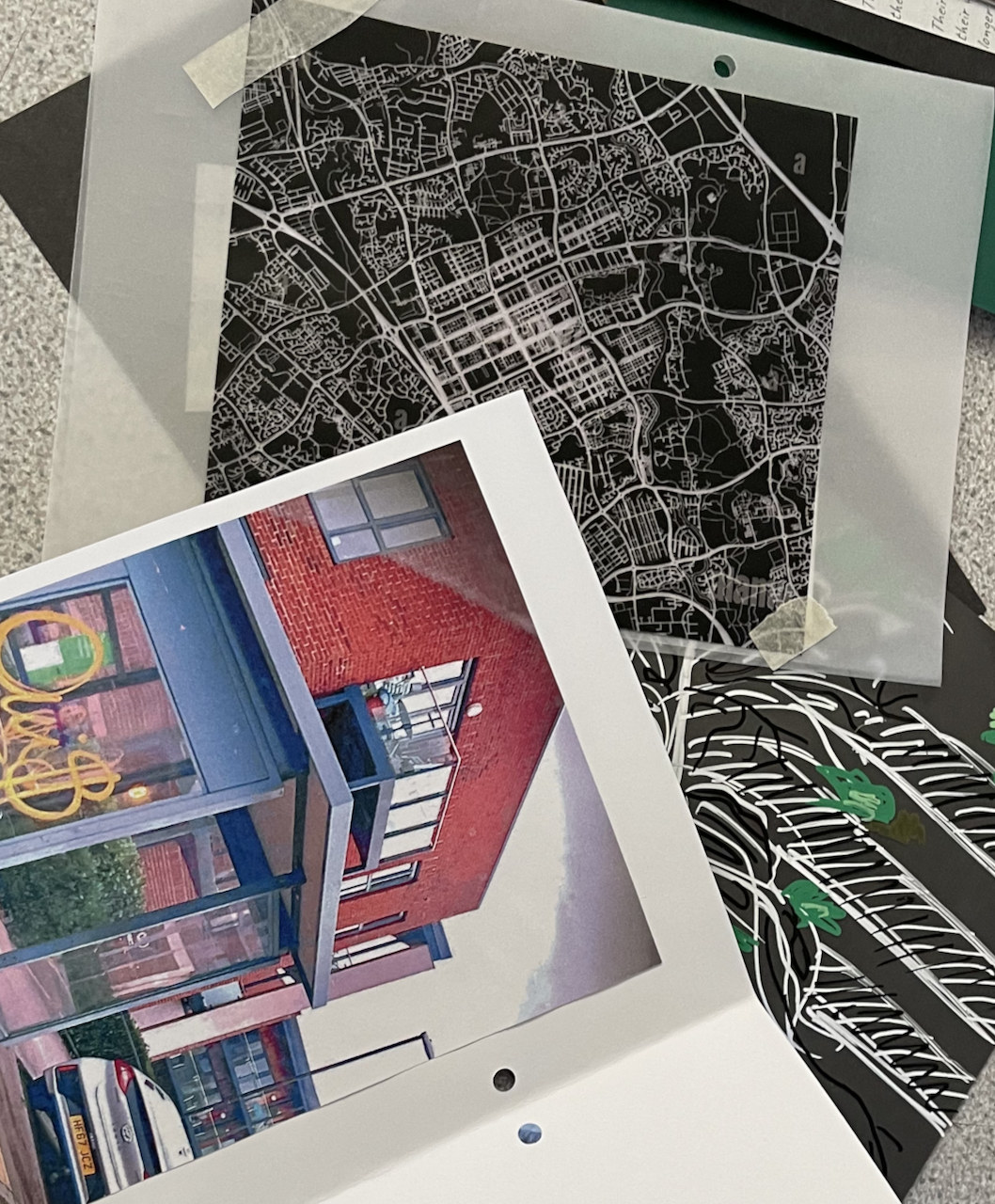
PROCESS
During the workshop we explored some fast and effective paper manipulation techniques to create sculptural form and looked at other artists work to see the influence of this sort of thing in bigger more permanent artworks. We spent time looking through the preparatory work they had done, discussed their perspectives on Oakgrove, what they saw, what they liked, the general vibe of the place, and what would be good if it changed. We then looked at how objects can hold meaning and value, and how we can play with this, through object theatre, through the words we put around them and by how we arrange them and the context we put them in. We then cleared our minds and did some freestyle creation, made up some titles, and finished with a chat about when we would like to meet again to look at how the commission has moved on.
During the workshop we explored some fast and effective paper manipulation techniques to create sculptural form and looked at other artists work to see the influence of this sort of thing in bigger more permanent artworks. We spent time looking through the preparatory work they had done, discussed their perspectives on Oakgrove, what they saw, what they liked, the general vibe of the place, and what would be good if it changed. We then looked at how objects can hold meaning and value, and how we can play with this, through object theatre, through the words we put around them and by how we arrange them and the context we put them in. We then cleared our minds and did some freestyle creation, made up some titles, and finished with a chat about when we would like to meet again to look at how the commission has moved on.

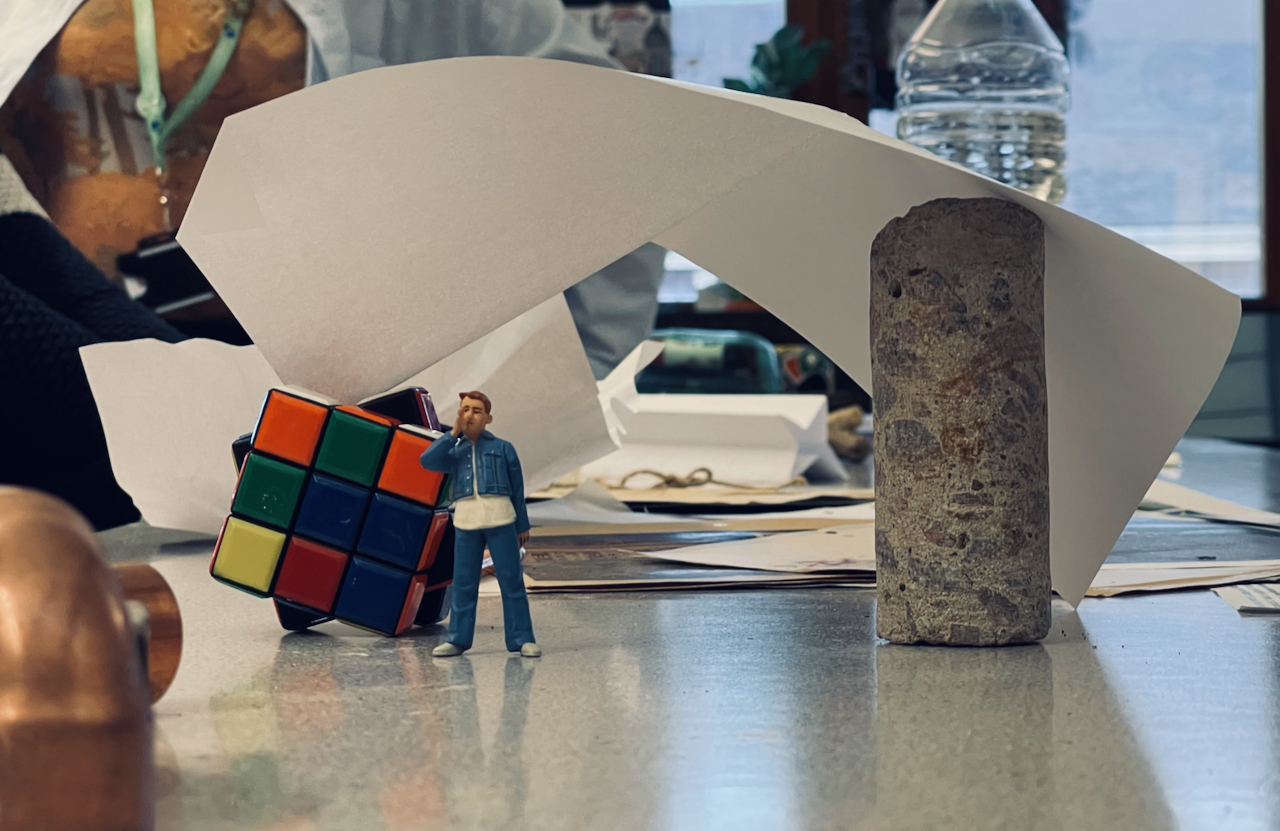
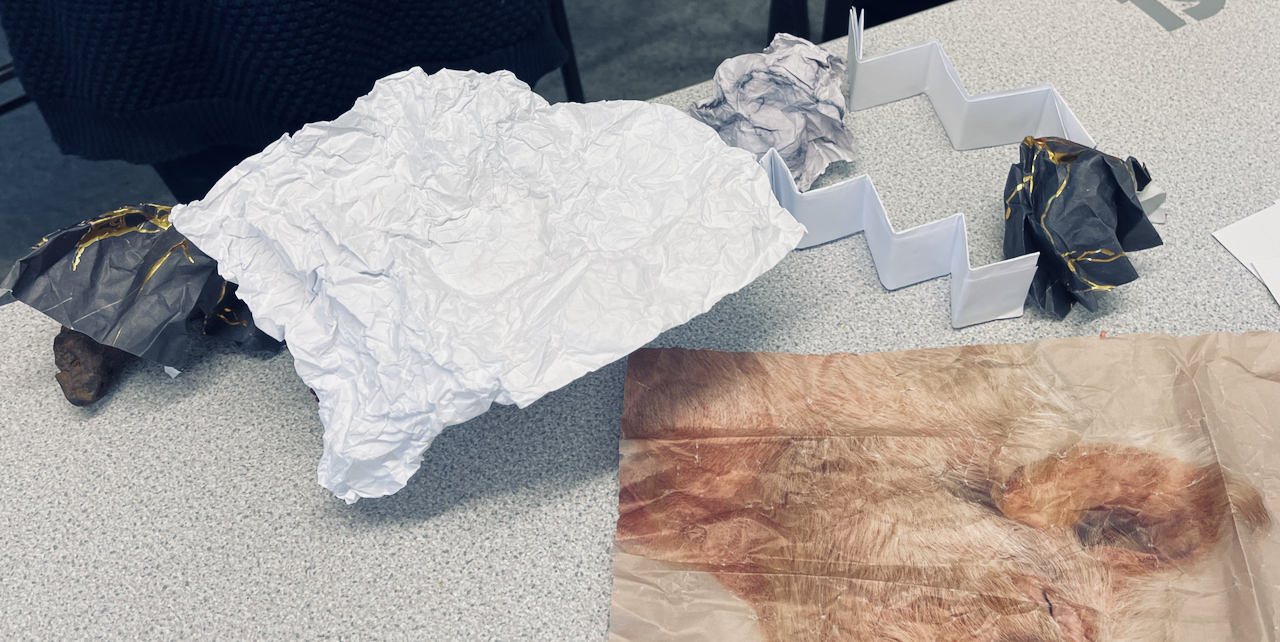
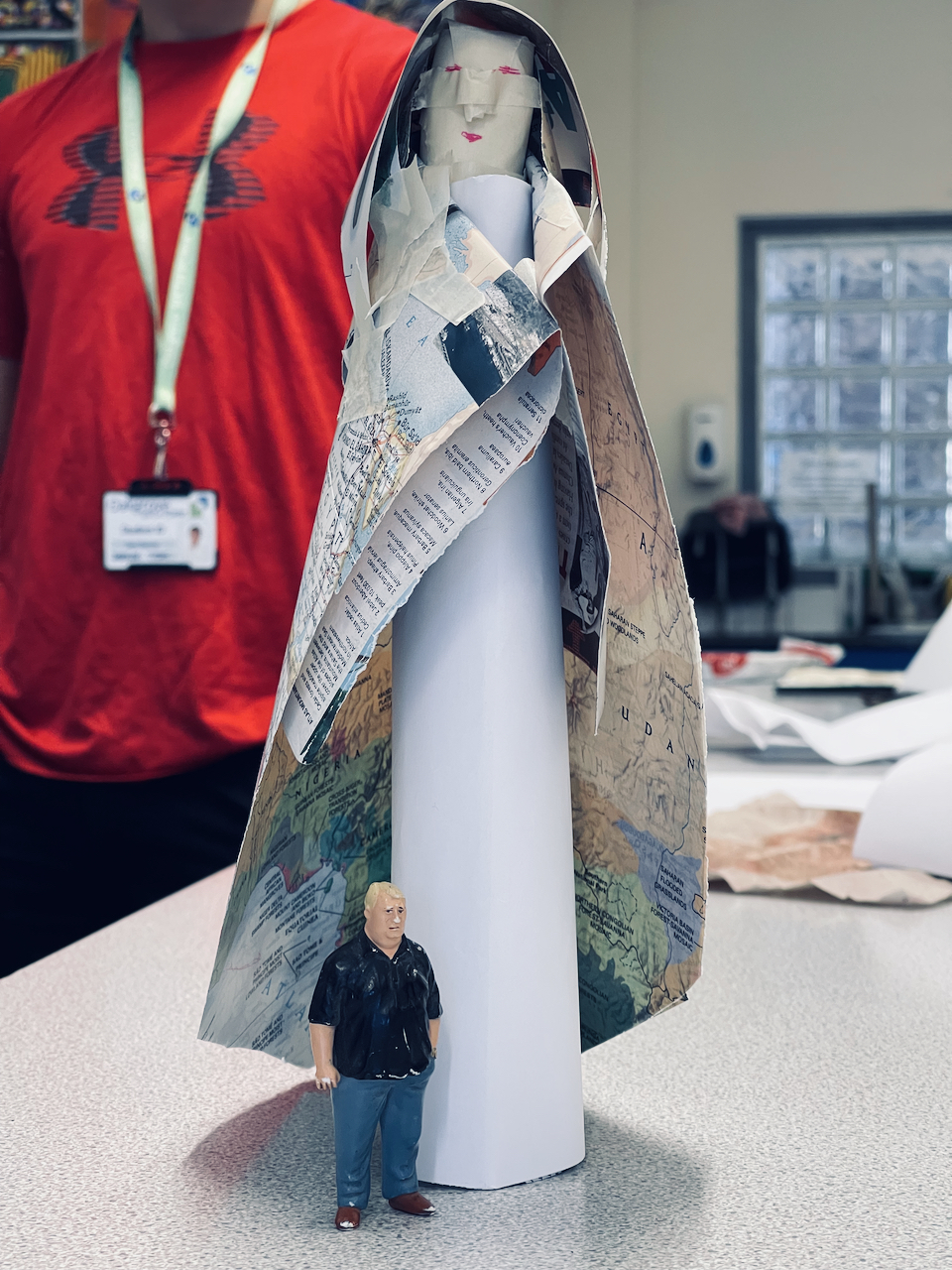
OBSERVATIONS
Here are some observations that were made by the students during the workshop: People never look up; there is a lot of wood cladding; the pallet of colours in the area is very dull; for a new artwork we need materials and colours that contrast - either super modern or super high quality; places to gather; a work could have many parts spread around the area; the work could be a story - a cast of lost characters; there are sometimes strange patterns in the brickwork on the houses; if you chip off some brick and look really close you see great variety and pattern within the detail – a polka dot pattern of many colours; pattern; in small objects found around Oakgrove there were materials like iron ore with its orangey blackness and strange natural circular shapes, and well as bits of discarded brick that had incidental fingertip sized holes that were very smooth in contrast to the roughness of the rest of the surface; texture; the roughness and smooth finger sized curved section of a piece of brick; scale; when we made things from marble patterned origami paper we wondered what these things might be like made big out of marble; materials; sentinels around Oakgrove; figurative characters with abstract sculpture; narrative; a mix of things being themselves and things made into other things - the rock as the rock and folded and painted metal being a piece of paper; a box; a colourful decorated elephant from elsewhere; a few titles - (Un)found family, Other mother, Tsunami, Connected, Shell-ter, The Base, Shelter of Society; the function of the work might not be to lift people out of the everyday, but simply to pull people back to the everyday from their phones and their thoughts.
Here are some observations that were made by the students during the workshop: People never look up; there is a lot of wood cladding; the pallet of colours in the area is very dull; for a new artwork we need materials and colours that contrast - either super modern or super high quality; places to gather; a work could have many parts spread around the area; the work could be a story - a cast of lost characters; there are sometimes strange patterns in the brickwork on the houses; if you chip off some brick and look really close you see great variety and pattern within the detail – a polka dot pattern of many colours; pattern; in small objects found around Oakgrove there were materials like iron ore with its orangey blackness and strange natural circular shapes, and well as bits of discarded brick that had incidental fingertip sized holes that were very smooth in contrast to the roughness of the rest of the surface; texture; the roughness and smooth finger sized curved section of a piece of brick; scale; when we made things from marble patterned origami paper we wondered what these things might be like made big out of marble; materials; sentinels around Oakgrove; figurative characters with abstract sculpture; narrative; a mix of things being themselves and things made into other things - the rock as the rock and folded and painted metal being a piece of paper; a box; a colourful decorated elephant from elsewhere; a few titles - (Un)found family, Other mother, Tsunami, Connected, Shell-ter, The Base, Shelter of Society; the function of the work might not be to lift people out of the everyday, but simply to pull people back to the everyday from their phones and their thoughts.
